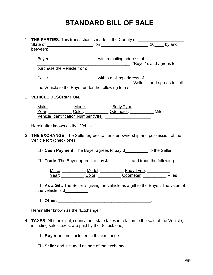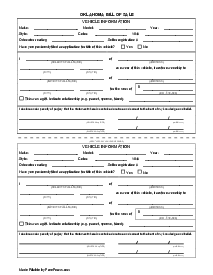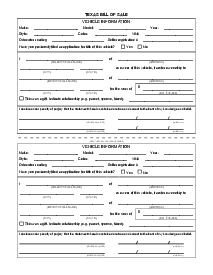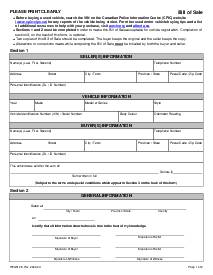-
Templates
1099 FormsAccurately report 1099 information returns and ensure IRS filing with easeExplore all templatesW-9 W-8 FormsEasily manage and share taxpayer details to streamline payments and meet IRS requirements with confidenceExplore all templatesOther Tax FormsFillable tax forms simplify and speed up your tax filing process and aid with recordkeeping.Explore all templatesReal EstateReal estate templates for all cases, from sale to rentals, save you a lot of time and effort.Explore all templatesLogisticsSimplify your trucking and logistics paperwork with our ready-to-use transportation and freight templates.Explore all templatesMedicalMedical forms help you keep patient documentation organized and secure.Explore all templatesBill of SaleBill of Sale templates streamline the transfer of ownership with clarity and protection.Explore all templatesContractsVarious contract templates ensure efficient and clear legal transactions.Explore all templatesEducationEducational forms and templates enhance the learning experience and student management.Explore all templates
-
Features
FeaturesAI-Enhanced Document Solutions for Contractor-Client Success and IRS ComplianceExplore all featuresAI Summarizer Check out the featureAI PDF summarizer makes your document workflow even faster. Ask AI to summarize PDF, assist you with tax forms, complete assignments, and more using just one tool.Sign PDF Check out the featurePDFLiner gives the opportunity to sign documents online, save them, send at once by email or print. Register now, upload your document and e-sign it onlineFill Out PDF Check out the featurePDFLiner provides different tools for filling in PDF forms. All you need is to register, upload the necessary document and start filling it out.Draw on a PDF Check out the featureDraw lines, circles, and other drawings on PDF using tools of PDFLiner online. Streamline your document editing process, speeding up your productivity
- Solutions
- Features
- Blog
- Support
- Pricing
- Log in
- Sign Up
Bill of Sale Parts Only
Get your Parts Only Bill of Sale in 3 easy steps
-
01 Fill and edit template
-
02 Sign it online
-
03 Export or print immediately
What Is a Bill of Sale for Parts
A Bill of Sale for Parts is a document that records the sale and transfer of various parts or components from a seller to a buyer. This type of bill of sale is prevalent in industries and hobbies where selling individual parts, rather than whole systems or units, is routine. For example, automotive parts, computer components, and machinery parts are often sold using a Bill of Sale for Parts.
The purpose of this document is to provide a legal record of the transaction detailing the specific parts sold, the sale price, the date of the sale, and the parties involved (the seller and the buyer). It protects both parties by clearly stating the condition and specifics of the parts sold, thereby minimizing the potential for disputes.
Bill of Sale Parts Only Requirments
- Names and contact information.
- Detailed descriptions of the parts sold, including make, model, condition, and identifying numbers.
- The agreed-upon price for the parts and payment terms (e.g., cash, credit, installment).
- The date when the transaction takes place.
- Any warranties the seller is providing regarding the parts' condition.
- Both parties' signatures validate the agreement.
How To Fill Out Bill of Sale For Car Parts
This document is crucial for personal record-keeping and legal protection and may also be required for tax purposes or future disputes. It helps ensure transparency in the transaction and provides a clear path for recourse should issues arise with the parts after the sale. Here are the step-by-step instructions to fill it out:
Step 1: Kind of Part
Specify each part being sold (e.g., alternator, transmission, brake pads).
Step 2: Manufacturer
Indicate the manufacturer of each part (e.g., Ford, Bosch, Honda).
Step 3: Serial Number(s)
If applicable, provide the serial number of each part. This helps in verifying the identity and authenticity of the parts.
Step 4: Condition of Item(s)
Describe the condition of each part (e.g., new, used, refurbished). Be as accurate as possible to avoid disputes.
Step 5: Sold for this Amoun
Enter the sale price for each part in U.S. dollars.
Step 6: Seller's Declaration and Information
This section is a declaration by the seller stating that they are the lawful owner of the goods, that the goods are free from all encumbrances (meaning they are not subject to any third-party claims or liens), and that they have the right to sell the items described. Provide seller's information:
- Print Seller's Name: The seller should print their full legal name.
- Business Name: If the sale is being conducted on behalf of a business, include the business name.
- Seller's Address: Provide the full address of the seller, including street name, city, state, and zip code.
- Signature of Seller/Date: The seller should sign their name to validate the bill of sale and enter the date of the transaction.
Step 7: Buyer's Information
- Print Buyer's Name: The buyer should print their full legal name.
- Buyers Address: Provide the full address of the buyer, including street name, city, state, and zip code.
- Signature of Buyer/Date: The buyer should sign their name to validate the bill of sale and enter the date of the transaction.
Ensure both parties receive a copy of the completed bill of sale for their records. This document serves as proof of purchase and ownership transfer of the specified parts from the seller to the buyer. It may also be required for tax purposes or legal verification in case of disputes.
Fillable online Parts Only Bill of Sale


































































